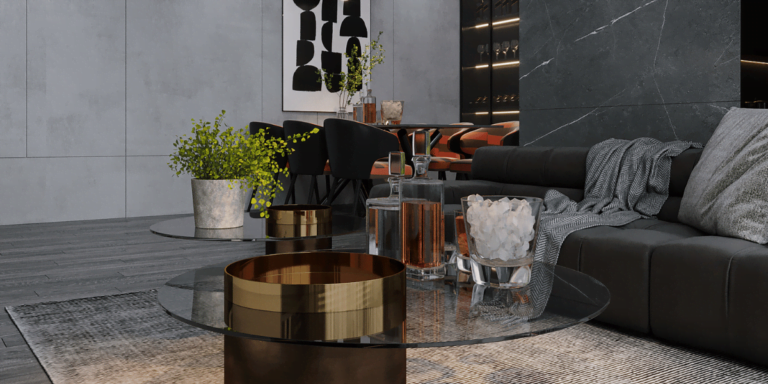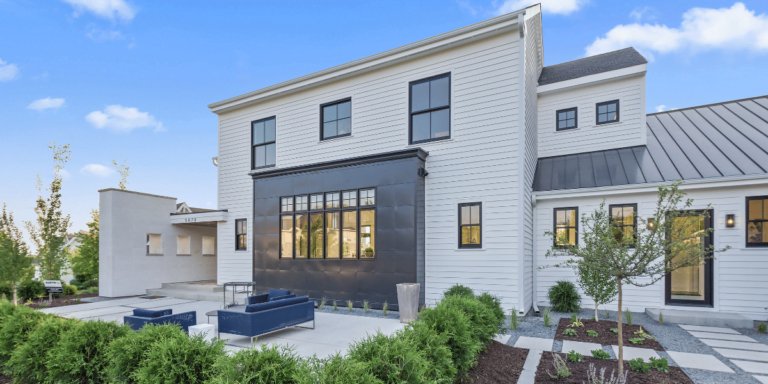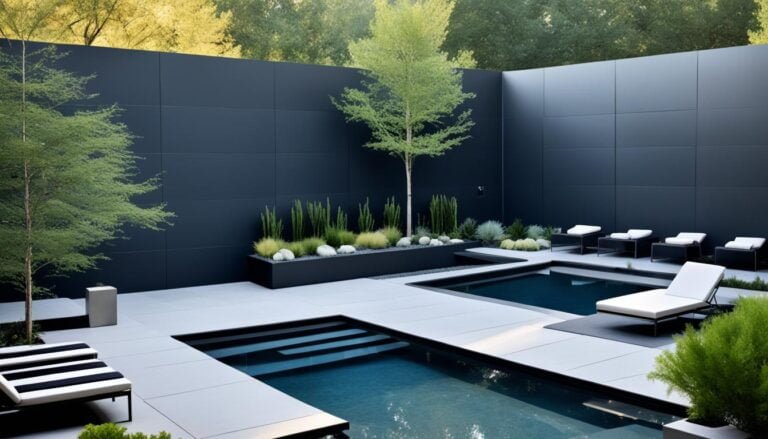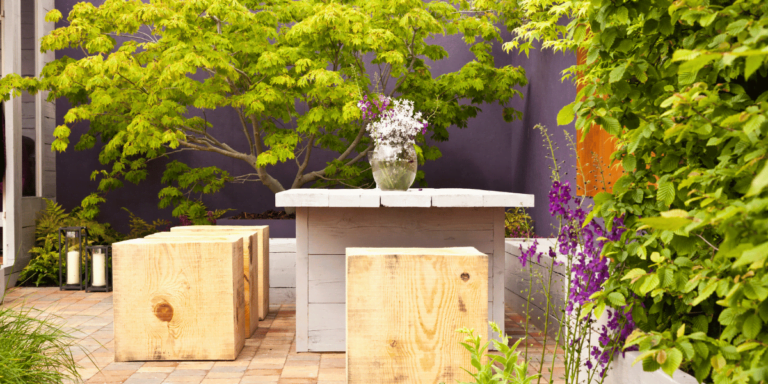Images of Raised Garden Beds raised garden beds are loved by garden fans for good reasons. They help plants grow well and make the outdoor look pretty. They come in many styles, like the classic potager or new and fancy types. This gallery of raised garden bed designs will surely inspire you.
Many raised beds have smart features. You can find self-watering systems in 10% of them and cool concrete block designs in 7%. Stock tank gardens stand out, making up 1 in every 20 designs. Also, 1 in every 15 designs are tiered, which DIY lovers adore.
Using raised beds in your garden has a lot of pluses. It makes the soil better, stops weeds, and prevents soil from getting too packed down. You can make your garden look amazing with special materials like landscape timber or stone. Adding trellises for climbing plants (5%) and using fabric grow-bags (2%) shows how creative gardeners can be.
Key Takeaways
- Images of Raised Garden Beds do wonders for soil, drainage, and keeping weeds away.
- They offer a wide range of looks, from classic to modern, for any garden style.
- Look out for self-watering beds (10%) and clever concrete block uses (7%).
- Tiered and DIY designs are perfect for making the most of your space and personal touch.
- Raised beds also help with easy access, so they’re great for anyone who loves gardening.
Benefits of Raised Garden Beds
Many gardeners now prefer raised garden beds. They offer several benefits that can improve the gardening experience. One key advantage is increased efficiency and enjoyment.
Better Soil Drainage
Improved soil drainage stands out as a top benefit of raised garden beds. They prevent soil compaction and waterlogging. This creates the perfect environment for plants to grow. According to a study at Dawes Arboretum, raised bed harvests were almost double that of traditional gardens. This is because you can plant more densely, thanks to the special soil conditions in raised beds.
Ease of Access
Garden accessibility is a major advantage of raised beds. Their raised design makes gardening easier on the back by reducing bending and kneeling. For those with mobility issues, designs can be made to be wheelchair accessible. It’s recommended that beds be between six to eight feet long, three to four feet wide, and 10 to 12 inches high to allow easy access from all sides.
Pest Control
Raised beds also help with natural pest control. Their elevated nature creates barriers against pests like moles and voles. Controlling pests from the perimeter is also easier. Adding exclusion fabrics like bird netting can further protect your garden from pests.
Customization Options
The ability to custom the soil makes raised beds great for different plants. They warm up in the spring faster, letting you plant earlier. You can use various materials to build them, from cedar to metal. This not only adds to the look of your garden but also makes it more efficient and adaptable.
In conclusion, raised garden beds offer more than just good looks. They improve soil drainage, are easier to access, help with pests, and offer customization. These benefits make raised garden beds good for any gardener.
Popular Materials for Raised Garden Beds
Choosing the best raised garden bed materials is important for a beautiful and long-lasting garden. You can use warm wood, durable stone, or creative upcycled materials. Each choice has its own benefits.
Wood
Wooden beds are a great, timeless pick for raised gardens. Many use untreated cedar because it doesn’t rot and looks nice. A typical set up includes:
| Material | Quantity |
|---|---|
| 2″ x 4″ x 8′ Untreated Cedar | 9 |
| 4″ x 4″ x 8′ Untreated Cedar | 1 |
| 2 – 1/2″ Screws | Various |
Durable wood beds are both reliable and look good. This makes them a top pick for those who like nice things that also help the planet.
Stone
Natural stone adds a lasting and fancy look. It may cost more to buy and set up. But it lasts a long time and doesn’t need much care, which is worth it for a lot of people.
Upcycled Materials
Using old materials shows off creativity and caring for the earth. People use old wood, metal, or furniture to make unique gardens. These gardens speak to their owners’ style and support green living. And they get people talking about creative reuse and gardening.
Each material for raised garden beds has its own benefits. You can choose based on what you like and how you want your garden to look. Whether it’s wood, stone, or reused stuff, you can make a garden that’s truly your own.
Creative Raised Bed Shapes and Sizes
Raised beds help make the most of your garden space. They also bring creativity to your garden. These beds come in various shapes and sizes, giving you many options to design your garden.
Rectangular Raised Beds
Rectangular raised beds are a classic choice. They are often three to four feet wide and six to eight feet long. This size works well for multiple plants and is easy to reach across. These beds should go where they’ll get six to eight hours of sunlight for best plant growth.
Hexagonal Raised Beds
Planning something special? Try hexagonal raised beds. These beds stand out because of their unique shape. They use space very efficiently. Plus, their design is loved for looking beautiful yet practical.
Triangular Raised Beds
Looking for something different? Triangular raised beds might be what you need. They fit perfectly in garden corners. They also make your garden look more dynamic. These beds are great for using space well.
There are many shapes and sizes possible with raised beds. You can choose what fits your garden and style best. Whether it’s a classic rectangle, an eye-catching hexagon, or a space-saving triangle, they all work well for planting. Have fun designing your garden with these options.
DIY Raised Garden Bed Plans
If you love working in a garden, making your own DIY raised garden bed is a great project. It’s good for your budget and lets you showcase your creative side. The bed’s size is about 2 by 4 feet and 33 inches high. It fits well in most yards.
To make a strong garden bed, you’ll need some materials. These include 12 cedar 1×4 boards that are 8 feet long and 4 cedar 2×4 boards of the same length. You also need chicken wire that’s 2 feet wide and landscaping fabric. Cedar is best for this project because it resists rot and doesn’t have harmful chemicals.
A big tip for making a garden bed at home is to choose a good depth. This makes the soil weight easier to handle and keeps the bed strong for a long time. Adding support boards on the sides and a bottom shelf helps a lot. Make sure there’s space between the bottom slats for water to drain.
Consider adding a trellis for plants like tomatoes and jalapenos. It uses up less space and helps your plants grow well. For a nice look, you can use Ebony stain on the 2×4 parts and Aged Wood Accelerator on the slats.
After building the bed, you’ll need about 8 bags of soil to fill it. Raised beds are great for planting many things, like tomatoes, lettuce, cucumbers, and herbs. They turn your backyard into a beautiful garden. Check out more about custom garden bed blueprints and raised garden DIY projects online.
Images of Raised Garden Beds
Raised garden beds have a lot to offer. They blend function with beauty. Many garden design photography sessions show unique styles. They range from the charm of old materials to the sleek look of modern designs. A rich photo gallery garden bed inspiration displays the many ways these gardens can be created.
Options range from tough cedar to cleverly reused pallets. Raised garden visuals showcase designs that create visual interest. There are also enclosed beds for keeping pests out. They come in many different styles.
The images of raised garden beds highlight new ideas and materials. Hoop structures make a protective cover for plants. Self-watering tables make the most of limited garden space. Straw bales and trellises are also used. They help in saving space and supporting plants to grow.
| Material | Features | Design Style |
|---|---|---|
| Concrete | Durable, modern | Contemporary |
| Cedar Wood | Rot-resistant, natural | Rustic |
| Recycled Pallets | Eco-friendly, cost-effective | Utilitarian |
| Straw Bales | Versatile, affordable | Traditional |
| Water Troughs | Distinctive, sturdy | Industrial |
The garden design photography examples offer more than beauty. They give us ideas for community spaces and urban gardens. These designs are about smart and creative gardening.
Innovative Raised Bed Gardening Techniques
Raised bed gardening has come a long way. New methods help plants grow better. They also make the garden look nice. You can use these methods to improve any garden space.
Companion Planting
Companion planting is about putting plants together that help each other. They might fight off pests or use nutrients better. For example, growing marigolds near tomatoes can stop harmful nematodes. This approach increases your garden’s health and yields.
Vertical Gardening
Vertical gardening is great for small spaces. You can use walls or trellises to grow plants up. This way, you save space on the ground. It’s perfect for plants like cucumbers and peas.
Square Foot Gardening
Square foot gardening is about using space wisely. You plant different crops in each square foot. This ensures your garden uses space and resources well. It’s a great method for all gardeners, from newbies to pros, looking to grow more in their raised beds.
Easy-to-Maintain Raised Bed Designs
Gardening lovers who want low-maintenance garden designs should consider raised beds. These make garden care much easier. It’s important to choose the right materials. Cedar wood, for example, resists weather well. It’s also good to use an eco-friendly sealant like Garden Seal to make it last longer. But, stay away from pressure-treated wood. It can put harmful chemicals into the soil.
The size of the raised beds matters a lot for practical garden structures. Beds should be 3’-4’ wide for easy tending from all sides. They shouldn’t be more than 3′ high to keep plants within reach. Lengths can go from 6′-8′, giving you space for many types of plants. With the right size, your garden will be easy to work in and take care of.
Drip Irrigation Systems are perfect for raised garden bed maintenance tips. They water plants automatically, which saves you time. They also help you use water more efficiently. It’s best to water in the morning or evening, especially when it’s hot. This helps plants grow strong.
Square-foot gardening is a smart way to plant your garden. You plant in 4×4-foot squares. This method uses space well and keeps weeds down. Hugelkultur is another good way to garden. With this method, you layer organic material. It breaks down slowly and makes the soil better over time. Both ways make your garden more sustainable.
| Design Feature | Benefits |
|---|---|
| 3’-4’ Width | Easy Access from Both Sides |
| 3′ Height | Comfortable Reach |
| 6′-8′ Length | Ample Planting Space |
| Drip Irrigation System | Water Efficiency and Time Saving |
| Square-foot Gardening | Optimized Plant Spacing |
Upcycling for Unique Raised Garden Beds
Upcycling is a cool way to design garden spaces. You get to create unique raised garden beds by using old items or furniture. This adds creativity and sustainability to your garden. Fabric grow bags are also a great option for gardening. They offer flexibility and are easy to move around. Now, let’s check out some cool upcycling ideas.
Antique Markets
Antique markets are great for finding unique pieces. For example, you can use old clawfoot bathtubs as planters. This adds elegance and a historical touch to your garden. Such finds from antique markets can make your garden beds full of character and charm.
Repurposed Furniture
Old furniture can also be used for gardening. Things like dressers, bookshelves, and bed frames make great raised beds. This way, you’re not only stopping waste but also adding beauty to your garden. It shows you don’t need to spend a lot to be creative.
Fabric Grow Bags
Fabric grow bags are a modern gardening solution. They work well in small or urban areas. Using these bags means you can easily move your plants. Plus, the fabric helps keep roots healthy with good airflow and drainage.
| Material | Source | Unique Benefits |
|---|---|---|
| Vintage Bathtubs | Antique Markets | Adds elegance and history |
| Old Dressers | Repurposed Furniture | Provides unique storage and display |
| Fabric Grow Bags | Innovative Solutions | Flexible and promotes root health |
Try these ideas in your garden for a unique yet budget-friendly space. It’s a great way to make your garden stand out.
Conclusion
Images of Raised Garden Beds change how we garden today, bringing many perks. They make gardening and outdoor spaces look better. You pick the soil mix, which helps plants grow more food and healthier. These beds let water move away and air get through, making plants happy. Using raised garden beds makes the soil better and helps care for the Earth.
These beds are up high and keep weeds and pests away. They block weeds and pests that live under the ground. Less weeding means more time to enjoy the garden. Anyone can use them, making gardening fun for everyone. They warm the soil fast in spring, letting you plant early and keep off frost.
Raised garden beds also make gardens neat and help plants grow better next to each other. Adding them to a yard is a big deal, needing stuff like good soil and manure. You can even put in nice paths and rocks. And don’t forget the pretty and useful fire table, which hides things we don’t want to see, making the garden look just right.
Looking back at these garden beds, we see they are very useful and pretty. They work for all kinds of gardens and gardeners. You can make them yourself or reuse things in fun ways. This means there are lots of ways to make a beautiful garden that you love. Raised beds are not just for growing plants; they are for creating your own piece of nature.

















